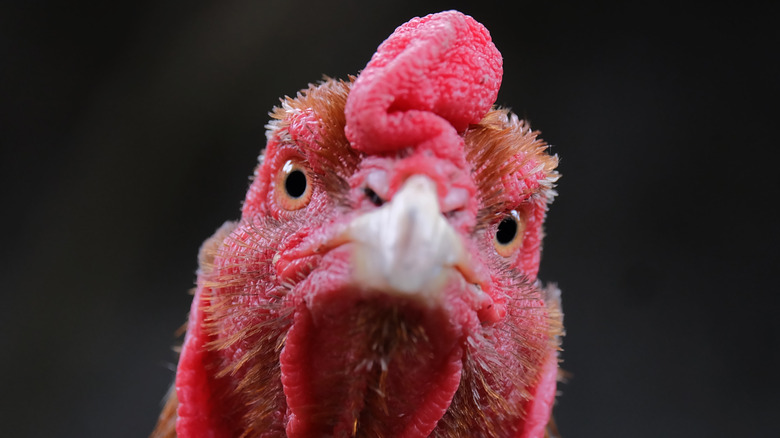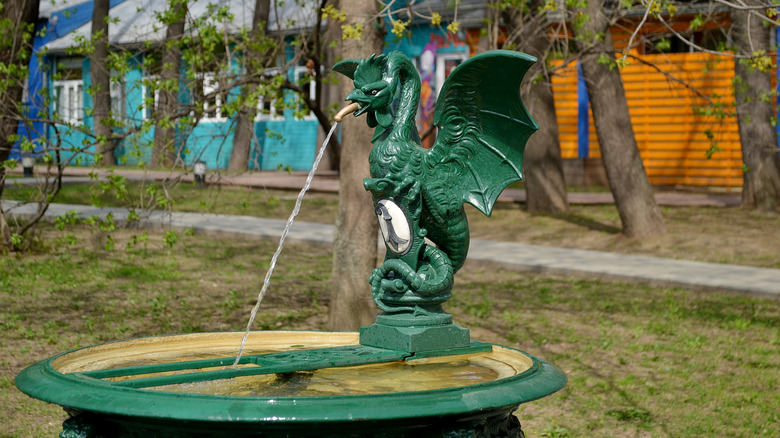Why This Rooster Was Put On Trial And Burned At The Stake
History is nothing if not continually surprising and bizarre, and the fact that at least 10 different animals have been arrested, charged with a crime, and put on trial just proves that point. Per Sam Ursu on Medium, pigs have been arrested several times in various locations for attacking small children, and a dog that bit a soldier in Vienna, Austria was sentenced to a year in an iron cage in the center of town normally reserved for "blasphemers, rowdies and other breakers of the peace." Even earlier in history, in 1474, a rooster that committed the "heinous and unnatural crime of laying an egg" was put on trial and sentenced to death.
According to the History of Yesterday, the rooster's execution took place in Basel, Switzerland, and coincided with the rise of "Wiccaphobia" — "the fear of witches and witchcraft." In 13th century Europe, Saint Thomas Aquinas started writing about sorcery, which challenged the previous position of the Catholic church that witches and witchcraft were nonexistent "pagan superstition." Aquinas' writings influenced church doctrine, and the era of witch hunts began, starting in France and Switzerland and spreading throughout Europe. The specific fear of an egg-laying rooster can be traced all the way back to around 1180 when British scholar and theologian Alexander Neckam wrote "De naturis rerum." In the work, he speculated that if a rooster lays an egg that is incubated by a toad, it would turn into a cockatrice — a mystical creature with the ability to kill with one look or breath.
An egg-laying rooster was convicted of witchcraft
Per Britannica, the cockatrice was also called a basilisk (shown above as a fountain sculpture) and originated in Hellenistic and Roman legends. In 15th century Europe, fear of cockatrices led to the belief that egg-laying roosters were the spawn of Satan that were used by witches to cast spells, per History of Yesterday. This contributed to the hysteria in Basel, Switzerland, that led to a rooster's arrest and charge of witchcraft.
A full trial ensued, with a public defender speaking for the rooster and noting in court: "On behalf of the gallinaceous prisoner...his advocate submitted that no evil animus had been proved against his client and that no injury to man or beast had resulted." The prosecutor responded in part that "it was not a case of the devil making a compact with brutes, but that Satan actually entered into them on occasion." Per the town's archives, the trial ended with a conviction and the rooster was sentenced to be burned at the stake in the center of town along with one of its eggs. As when a person was convicted and burned at the stake, the town's residents gathered and watched the rooster's gruesome execution.
So why do roosters occasionally lay eggs? It turns out that egg-laying roosters are actually hens with hormonal imbalances that cause them to display the secondary characteristics of roosters. According to a chapter in the book "Methodology, Metaphysics, and the History of Science," this was not the last rooster to be prosecuted in Switzerland — accounts of similar trials exist as late as 1730.

